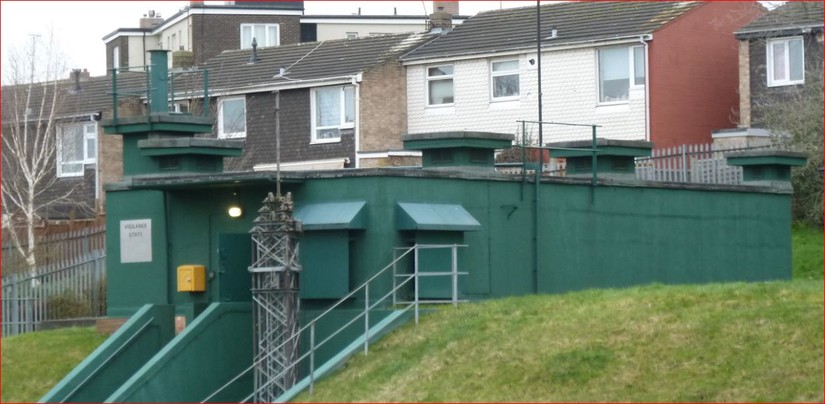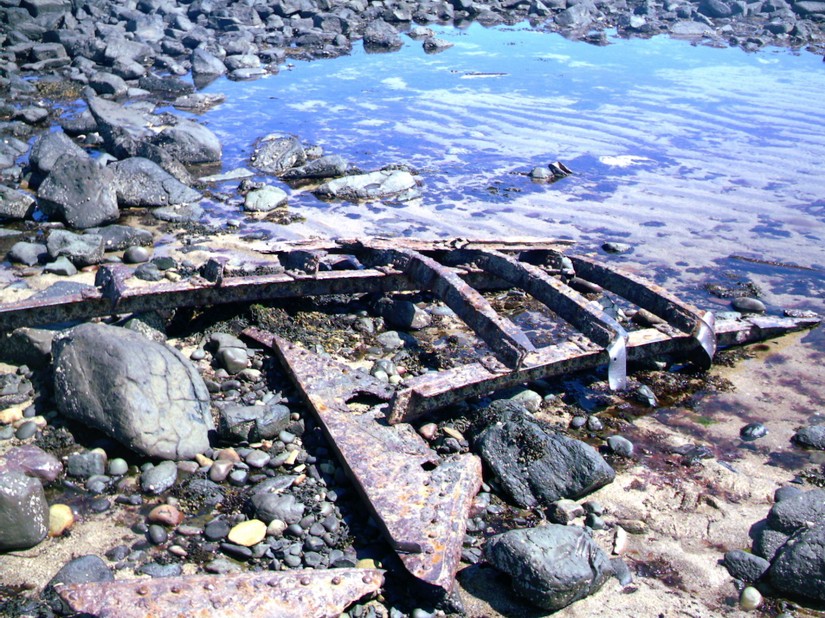The chilling remnants of the Cold War
13/03/2017 | Andy Sherman
For thousands of years British coastal defence has centred on ship-bourne raiders and invaders; from Roman signal stations and Saxon shore forts to Second World War pillboxes and coastal batteries. As the Second World War progressed the focus of coastal defence changed to tracking and shooting down aerial threats including massed ranks of heavy bombs during the Blitz and single flying bombs towards the end of the conflict. During the Cold War some of Britain’s coastal defences were tasked with reporting on a far harder threat to map, fallout from nuclear missiles.
“Four years after the German surrender in 1945, the Soviet Union tested a plutonium bomb they named First Lightning, and just a year later, war erupted on the Korean peninsula. Once again, alarm bells rang in the UK defence establishment. Initially, the specific danger was the Soviet Tu-4 bomber, a clone of the American B-29 Superfortress, with a range of 4000 miles and an atomic payload” (Crane 2012, 118).
Perhaps the most chilling Cold War structures to be found on the coast are the remains of Royal Observer Corps (ROC) fallout monitoring bunkers. The ROC had be formed in 1925 with the aim of tracking the course of enemy bombers as they crossed the UK. In the mid-1950’s the ROC was reformed and given a grislier and far more dangerous task. Reporting on and plotting the locations of nuclear explosions.
“ROC fallout reporting bunkers were normally staffed by three volunteers who worked within the tight confines of a 5.8m x 2.6m x 2.3m concrete box. This was completely buried in the ground and covered by approximately 1m compacted soil. Entry was via a single access hatch to a 4.5m deep shaft, with the reporting/living quarters on one side and rudimentary elsan latrine on the other. The crew operated three main instruments. A bomb power indicator ran through the roof to the surface which used overhead pressure to measure the strength of nearby explosions. A fixed survey meter also ran from the roof into the bunker, allowing the crew to measure gamma radiation levels. The third instrument, the ground zero indicator, however required someone to exit the bunker. This instrument measured the bearing and height of the nuclear explosion” (O’Neil 2016, 10). This information would then be send to a local command centre, enabling the location and strength of nuclear blasts to me measured.

CITiZAN North has been looking at an ROC fallout monitoring post on the Sefton coast. This bunker was open in 1962 and located close to Albert Road. The staff stationed there would have plotted missile strikes and nuclear fallout around Liverpool. The bunker was dug into the sand dunes close to an older naval observation tower. Given the unstable nature of the surrounding sand the bunker was protected by an external concrete blast-wall, which would have provided some protection against blast waves from nuclear explosions.


The Sefton monitoring wasn’t in operation for long, being abandoned between 1966 and 1968 due to erosion and replaced by a new observation post located at RAF Woodvale (Adams and Ahmad 2011). The majority of the Royal Observer Corps were stood down in 1991, with the final members of Nuclear Reporting Cells stood down in 1995.
The remains of ROC bunkers and other pieces of NATO infrastructure, such as the Ballistic Missile detecting radar station at RAF Flyingdales, are not the only legacy of the Cold War to be found on and around the British coast. In certain places the remains of the Soviet Union’s efforts to spy on Britain and her allies can also be seen. One of these sites can be seen in Nova Scotia Bay, below Dunstanburgh Castle on the Northumberland coast where a scatter of rusting iron ribs marks the wreck site of a Polish registered trawler. In 1964 at the pinnacle of the Cold War the trawler was deliberately run aground and her Polish captain claimed political asylum for himself and his crew. Local residents remember that the trawler carried an unusual number of aerials and that everybody aboard the vessel were rapidly hustled into Russian vehicles and driven away (Oswald et al 2006, 91).

Thankfully the Cold War never became red hot and the remains of the UK’s fallout monitoring stations can be left to rest in peace.
Adams M and Ahmad C, 2011, An archaeological assessment of the Hightown Dunes dune restoration works proposals (coastal haul road), National Museum Liverpool
Crane N, 2012, Coast, our island story, BBC books
Davey K (ed), 2014, York Cold War bunker, English Heritage
O’Neil J, 2016, ‘The archaeology of Armageddon’, Archaeology Ireland, Volume 30, No. 4, Issue No. 118, 10-13
Oswald A, Ashbee J, Porteous K and Huntley J, 2006, Dunstanburgh Castle, Northumberland: archaeological, architectural and historical investigations, English Heritage








